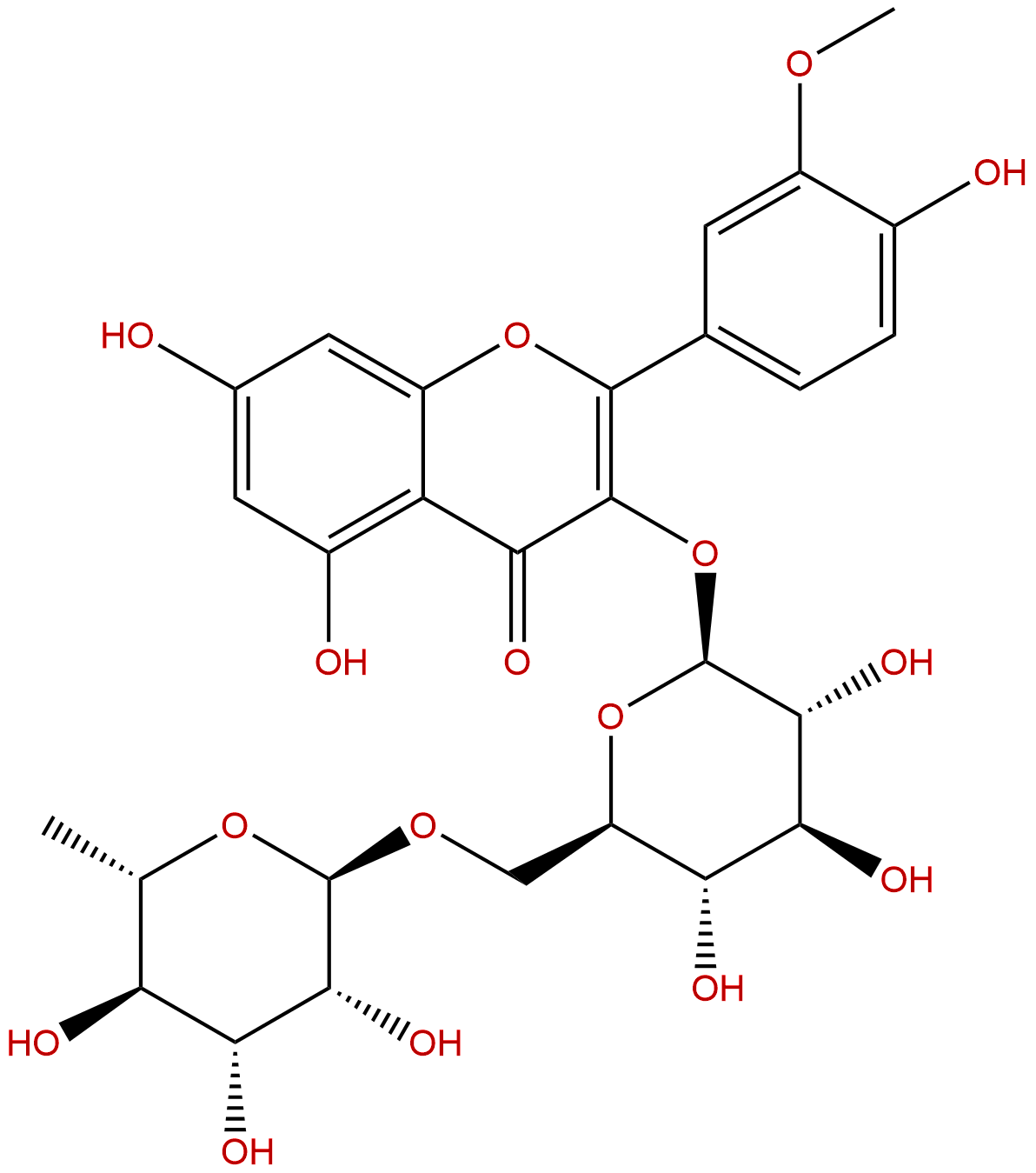
NarcissosideCAS No.:604-80-8
|
||||||||||
 |
|
|
||||||||

| Catalogue No.: | BP0979 |
| Formula: | C28H32O16 |
| Mol Weight: | 624.548 |
Synonym name: Isorhamnetin 3-rutinoside; Narcissin
Catalogue No.: BP0979
Cas No.: 604-80-8
Formula: C28H32O16
Mol Weight: 624.548
Botanical Source: the flowers of Narcissus tazetta, pollen of Lilium aurantum, of Herniaria glabra, Cereus grandiflorus, etc.
Purity: 95%~99%
Analysis Method: HPLC-DAD or/and HPLC-ELSD
Identification Method: Mass, NMR
Packing: Brown vial or HDPE plastic bottle
Can be supplied from milligrams to grams.
For Reference Standard and R&D, Not for Human Use Directly.
Inquire for bulk scale.
Description:
Narcissoside is a good 15-LO and α-glucosidase inhibitor, it with synergism of B.flavum flavonoid and rutin, could be responsible for stronger protection against mitochondrial induced oxidative stress.
References:
Pharmacogn Mag. 2015 Jan-Mar;11(41):14-23.
Flavonoid profiles of three Bupleurum species and in vitro hepatoprotective of activity Bupleurum flavum Forsk.
Bupleurum L. (Aspiaceae) species are used as herbal remedy in Chinese traditional medicine. OBJECTIVE: The aim was to investigate the flavonoids in three annual European Bupleurum species, including B. baldense, B. affine and B. flavum, and to test their antioxidant and possible hepatoprotective effects.
METHODS AND RESULTS:
Flavonoids from the methanol-aqueous extracts were quantified by solid-phase extraction-high-performance liquid chromatography. Bupleurum extracts (1-220 mg/ml) were tested for their antioxidant activity in DPPH and ABTS assays, as well as on isolated liver rat microsomes. In vitro hepatoprotective activity of B. flavum flavonoid (BFF) mixture and rutin, and Narcissoside, isolated from the same mixture, were evaluated on carbon tetrachloride (CCl4) and tert-butyl hydroperoxide (t-BuOOH) toxicity models in isolated rat hepatocytes. Narcissoside was the dominant flavonol glycoside in B. flavum being present at 24.21 ± 0.19 mg/g, whilst the highest content of rutin (28.63 ± 1.57 mg/g) was found in B. baldense. B. flavum possessed the strongest DPPH (IC50 22.12 μg/ml) and ABTS (IC50 118.15 μg/ml) activity. At a concentration 1 mg/ml of BFF (rutin 197.58 mg/g, narcissin 75.74 mg/g), a stronger antioxidant effect in microsomes was evidenced in comparison with silymarin, rutin and Narcissoside. The hepatoprotective effect of BFF significantly reduced the elevated levels of lactate dehydrogenase and malondialdehyde, and ameliorated glutathione, being most active in t-BuOOH-induced injury model when compared with CCl4 toxicity (P < 0.001).
CONCLUSIONS:
In BFF, synergism of rutin and Narcissoside could be responsible for stronger protection against mitochondrial induced oxidative stress.
HPLC of Narcissoside
